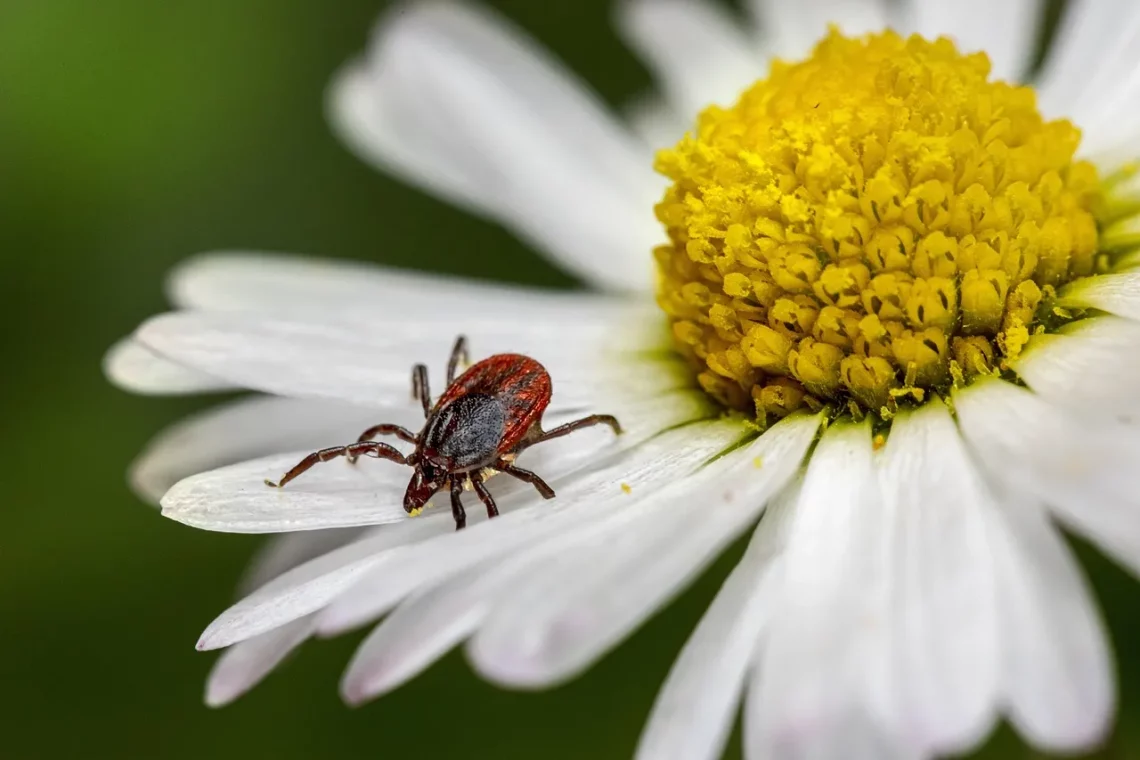
Can Ticks Survive in Water? Exploring Their Habitat and Behavior
Ticks are small arachnids that belong to the class of arachnids, closely related to spiders and mites. Despite their diminutive size, these creatures have gained notoriety as vectors of various diseases, including Lyme disease and Rocky Mountain spotted fever. Their life cycle includes several stages—larvae, nymphs, and adults—and they rely on a host for blood meals at each stage to grow and reproduce. Ticks are often found in grassy or wooded areas, where they can easily latch onto passing animals or humans.
The survival strategies of ticks are fascinating, particularly when it comes to their resilience in different habitats. One of the most intriguing questions that arise is whether ticks can survive in water. Understanding their habitat preferences and behaviors can provide insights into their survival mechanisms and the risks they pose to humans and pets. As we delve into the world of ticks, it becomes essential to explore their adaptability to various environments, including aquatic settings. This exploration not only broadens our understanding of these resilient creatures but also informs effective prevention strategies against their bites and the diseases they carry.
Understanding Tick Habitats
Ticks thrive in a variety of environments, primarily in wooded and grassy areas where humidity levels are relatively high. These habitats provide the necessary conditions for ticks to maintain their moisture levels, which is crucial for their survival. Ticks do not drink water like many other organisms; instead, they absorb moisture from their surroundings. This is why they are often found in areas with dense vegetation, where the humidity is more conducive to their needs.
Grasslands, forests, and the edges of these environments are favored areas for ticks. They typically inhabit the lower parts of plants or the ground, waiting for a host to brush against them. Their ability to sense carbon dioxide and body heat allows them to detect potential hosts from a distance. The microhabitat that ticks choose often includes leaf litter, tall grasses, and shrubs, as these areas tend to be more humid and provide adequate cover from predators.
Interestingly, ticks are not exclusive to rural or wilderness areas; they can also thrive in suburban settings where gardens and parks provide suitable conditions. In these environments, ticks can latch onto pets or humans, leading to increased encounters. The adaptability of ticks to various habitats underscores the importance of awareness and preventive measures in areas where they may be prevalent.
Moreover, certain species of ticks are more adaptable than others, with some being able to tolerate a wider range of environmental conditions. This adaptability can influence their distribution and prevalence in different regions, making it vital for individuals to be informed about the types of ticks present in their area and the best practices for avoiding bites.
Tick Behavior and Activity Patterns
The behavior of ticks is primarily driven by their quest for a blood meal. They are ectoparasites, meaning they live on the outside of their host and feed on their blood. Ticks exhibit a behavior known as “questing,” where they climb to the tips of grasses or shrubs and wait for a host to pass by. During questing, ticks use their front legs to grasp onto passing animals or humans.
Ticks are most active during warmer months when temperatures rise and humidity levels increase. While some species can survive cold temperatures, their activity significantly decreases in winter. In some cases, ticks can enter a state of dormancy during extreme cold, which allows them to survive until conditions become favorable again.
Additionally, ticks are sensitive to environmental changes. They thrive best in humid conditions since they can easily lose moisture and become dehydrated. This characteristic affects their behavior, as they are more likely to be found in shaded areas during hot and dry conditions. Understanding these behavioral patterns is essential for effective tick management, especially for outdoor enthusiasts and pet owners.
The timing of their activity also correlates with the life cycle stages of ticks. For instance, nymphs are often more active during late spring and early summer, while adult ticks are more commonly encountered in the fall. This seasonal variation in activity can affect the risk of tick bites, making it crucial for individuals to take preventive measures during peak tick activity periods.
Can Ticks Survive in Water?
The question of whether ticks can survive in water is a complex one. Generally, ticks are terrestrial organisms, and their biology is not suited for living in aquatic environments. They require moist conditions but are not adapted to prolonged submersion in water. If ticks find themselves in water, they can become disoriented and may drown if submerged for an extended period.
However, some studies suggest that ticks can survive short periods of flooding or being caught in rain. The ability of ticks to endure brief exposure to water may be attributed to their tough exoskeleton, which helps retain moisture. In addition, ticks can enter a state of dormancy when faced with adverse conditions, allowing them to withstand temporary challenges.
Despite their resilience, ticks do not thrive in aquatic habitats, and prolonged exposure to water is detrimental to their survival. This characteristic can be advantageous for individuals looking to reduce their risk of tick bites. For instance, avoiding areas that are consistently wet or marshy can help minimize encounters with ticks.
It’s also worth noting that while ticks may not survive in water, they can easily hitch a ride on animals that do frequent wet areas. For example, deer or other wildlife that enter and exit ponds or streams may transport ticks from one area to another, potentially increasing the risk of tick exposure in surrounding habitats.
Preventive Measures Against Tick Bites
Given the potential risks associated with ticks, implementing preventive measures is crucial for anyone spending time outdoors. Awareness of tick habitats and behaviors is the first step in reducing exposure. Here are several strategies to minimize the risk of tick bites:
1. **Wear Protective Clothing**: When venturing into tick-prone areas, wear long sleeves, long pants, and closed-toe shoes. Light-colored clothing can help identify ticks more easily.
2. **Use Tick Repellents**: Apply insect repellent containing DEET or permethrin on clothing and exposed skin. These chemicals are effective in deterring ticks.
3. **Stay on Trails**: When hiking or walking in wooded areas, stick to established trails to minimize contact with tall grasses and brush where ticks are likely to be.
4. **Perform Tick Checks**: After spending time outdoors, conduct thorough tick checks on yourself and pets. Pay special attention to areas like the scalp, behind the ears, armpits, and between the legs.
5. **Maintain Your Yard**: Keep your yard tidy by mowing regularly and clearing away leaf litter or tall grasses. Create a tick-safe zone by placing wood chips or gravel between your lawn and wooded areas.
By adopting these preventive measures, individuals can significantly reduce their risk of tick bites and the associated health concerns.
In conclusion, while ticks exhibit remarkable adaptability and resilience in various environments, they are not well-suited for aquatic life. Understanding their habitats, behaviors, and survival strategies can empower individuals to take effective measures against tick bites.
**Disclaimer:** This article is for informational purposes only and should not be considered medical advice. For any health concerns or questions regarding ticks and diseases they may carry, consult a healthcare professional.




